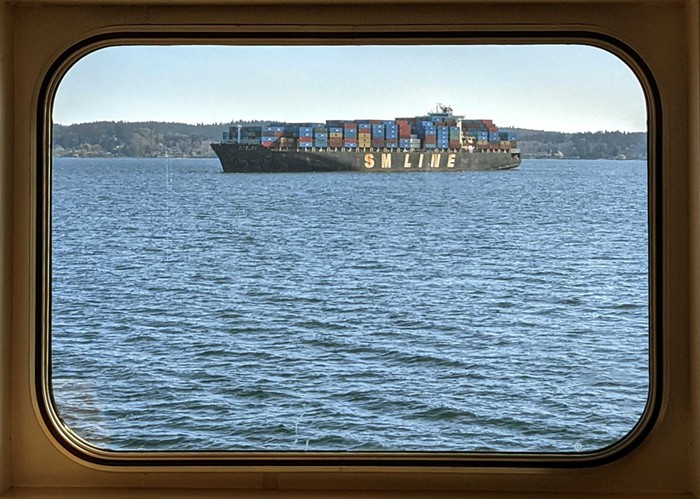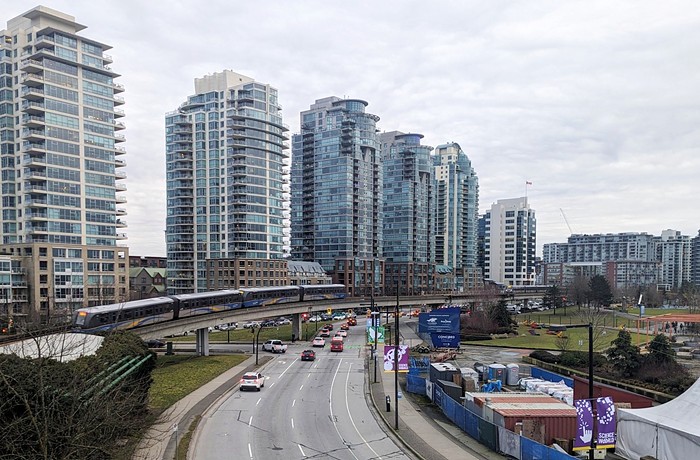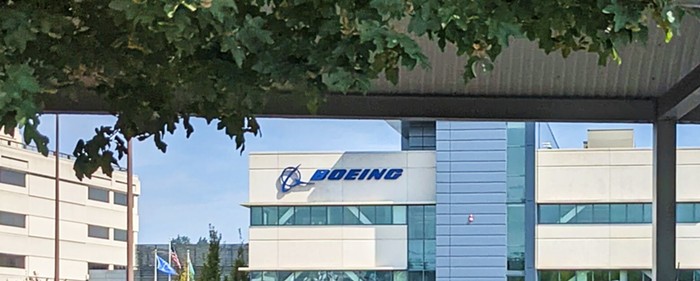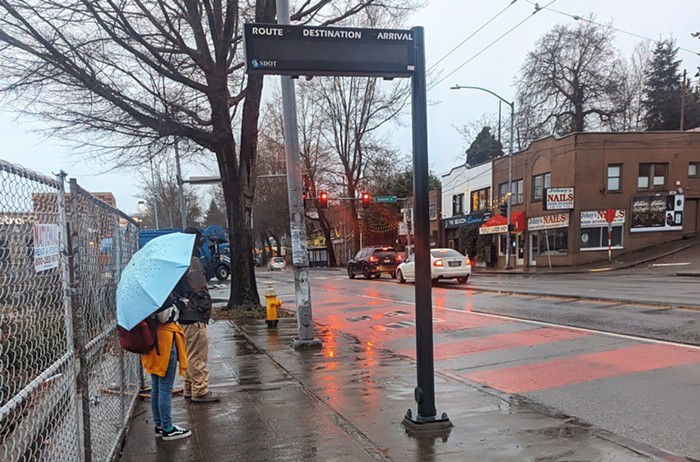
I walked across the John Lewis Memorial Bridge for the first time today at exactly 11:32 am.
At exactly 10:59 am, I had boarded one of Sound Transit's new trains — the S-700 series, made by the Munich-based corporation, Siemens Mobility. At 11:29 am, the train doors opened and I walked out onto the platform for Northgate Station.
Here, a degree of multimodality that is comparable maybe only to that of the International District/Chinatown Station has been achieved. The double-decker buses, the metro-buses, the bus stops, the park-and-ride, the arriving and departing trains, the real bike lanes (not the phony/flimsy ones) connected to the rise and fall of a ramp that provides bikers and pedestrians safe and easy access to the other side of the "mad, mad world" that's often stuffed, often exacting pounds upon pounds of time from the limited lives of the car-indebted.

Walking across the bridge is like walking on air. You know you are stable, you know you are on concrete and steel, you know the engineering is rock solid. But the distance between the noiseless calm of walking and the terrific roar of car/truck traffic below is so huge that one is gripped by the sensation of vertigo. "How is this even possible? Something is tricking my mind," you think. Nevertheless, you are on the other side of the 1,900-foot bridge in no time. This experience, for me, captured the feeling of a city whose space had been, once again, radically transformed by the Link light rail.
After my walk across the bridge, I had lunch at the always easy-going Watershed Pub & Kitchen, which is a five-minute walk from the station. Fifteen minutes after settling my bill there, I was passing the Elliott Bay Book Company on Capitol Hill. This is no exaggeration. I could not believe it myself. Indeed, I passed the Johnny's Southern Food truck, which is parked on Pine (right next to Cal Anderson Park), like one who through some sorcery had leapt forward in time. The future-ghost of me was passing on Capitol Hill. I even had the impression that no one noticed me. The release of time from this considerable collapse of space (Watershed/Johnny's) was, again, vertiginous.
But on my trip back from Northgate, I noticed something about my train. It offered an experience that was very different from the one that transported me from Columbia City. I looked around to see what had changed, and almost immediately I found part of the answer in the windows.
On this train I saw the traffic on I-5, which at 12:54 pm was waiting for the rush-hour storm, more clearly than when I arrived at 11:29 am. Why? Because, as I soon figured out, the windows on the older trains, manufactured by Japan's Kinkisharyo, were, though not as large as the ones on the new trains, less reflective, and therefore provided greater visual crispness. A comparison of a picture taken from the old train windows and the new train windows shows that the latter reflects you and the train's interior far more than the former.
But there is something else I noticed on my trip to Capitol Hill. The old train moved much, much faster. The moment it plunged into the tunnel, it was like riding on the back of a tiger. Or like being on that very hurried, haunted bus in a Harry Potter film.
The newer trains are not moving so fast. They are relatively slow, and one wonders if this has something to do with their newness—drivers are still in a learning period with them. But with the trains that have been around for over a decade, no caution is needed. The human and machine rapport has long been established. That sort of thing.
All of that said, allow me to close with some important tweets from the opening three days of the three, reality-transforming stations in Seattle.
Long ago, I gave up trying to understand Sound Transit's deep aversion to the visual presentation of train times. The most the institution is willing to give with anything that looks like regularity is a two-minute warning of a train's arrival. The screens at Capitol Hill Station have been "the color of television, tuned to a dead channel" for as long as I can remember. And yes, those pesky escalators were still being pesky. (They were working today, however.)
What’s disappointing on opening day is @SoundTransit continues to showcase its timeless inability to do 2 things right:
1️⃣ Provide real time information
2️⃣ Operate an escalator. 2 are out, on opening day 🤦🏻♀️
You’d think the agency would work harder to fix endemic failures pic.twitter.com/NgH1KALxzD
— Seattle Subway (@SeattleSubway) October 2, 2021

That's just the way it is. Some things will never change.
Free ORCA cards loaded for the game might be a better idea. https://t.co/rMiHU2Bp5W
— Ryan Packer (@typewriteralley) October 3, 2021
But how about this for a moment of beauty? Yes, we love you Link light rail.
Made some fan art of Seattle's new Northgate station :-) #seattle #Link21 pic.twitter.com/VXWtfWRafp
— my_art_bytes (@Myartbytes1) October 2, 2021



















